People
artnet Asks: Artist, Prankster, and Designer Maurizio Cattelan
The “retired” artist is presenting a collection of homewares at UNTITLED Miami.
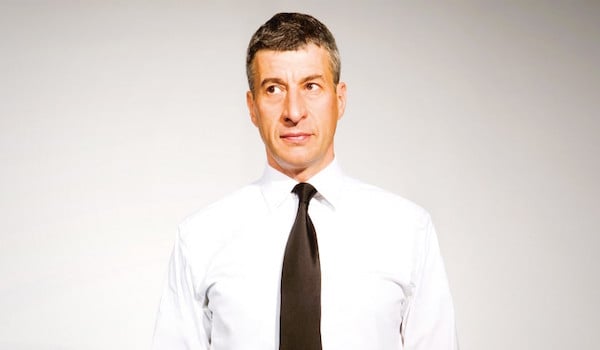
Photo: Pierpaolo Ferrari via Huck.
The “retired” artist is presenting a collection of homewares at UNTITLED Miami.

Lorena Muñoz-Alonso

This week, amidst the art, design, and luxury extravaganza currently unfolding at Miami Art Week, Maurizio Cattelan, arguably Italy’s most successful contemporary artist, is presenting a new set of works.
But, as you might know, Cattelan—loved and revered for his witty conceptual artworks, full of humor and bathos—retired from being an artist back in 2011. So for his Miami outing he’s presenting not “artworks” as such, but a series of domestic objects designed in collaboration with Pierpaolo Ferrari, his partnet at TOILETPAPER magazine, and produced by two illustrious Italian industrial design houses: Seletti and Gufram.
The items, which are being showcased and sold at the TOILETPAPER Lounge at the fair UNTITLED, include limited editions of Soap, a pouf in the shape of a giant soap bar with a huge bite on one of its sides; God, a version of Gufram’s iconic cactus tree design to which Cattelan and Ferrari have added a humungous pair of eggs, like a fertility totem of sorts; and The End, a tombstone made of polyurethane foam and granite texture, which can be used as a stool if you are so inclined.
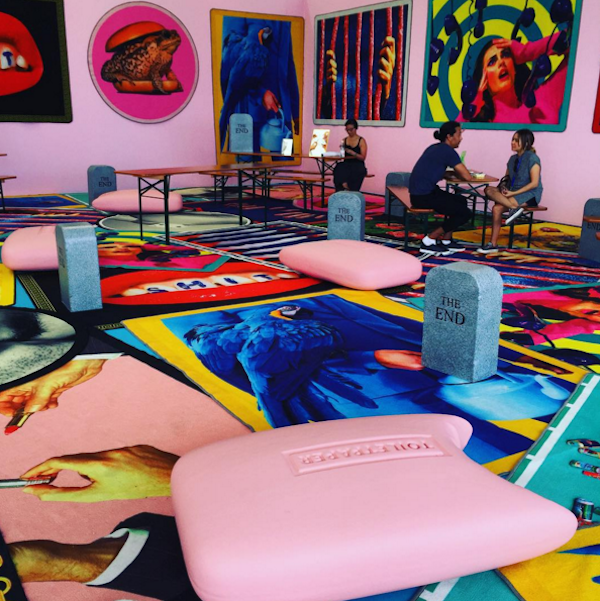
TOILETPAPER lounger.
Photo: Instagram/@tidatravels.
The lounge is also covered with items from the Seletti Wears TOILETPAPER collection, which includes tin tableware and porcelain plates, umbrellas, mirrors, coffee tables, and a new range of rugs and carpets presented here for the first time which are also on sale (this is a fair we’re talking about, after all).
artnet News contacted the legendary artist to discuss his work as a designer, his rather busy “retirement,” and why he has never been too fond of categories and disciplines.
Before you focused your practice on visual arts, you created some “useful objects” more in the vein of a designer. In your view, what are the essential similarities and differences between these two disciplines?
Think about primitive men in the Lascaux Caves: they built weapons with wood and stones in order to hunt their meal, then they decided to draw the hunting on the cave’s walls. The weapons were designed in order to answer a basic need—hunger—and solve the problem, while the hunting scenes were painted to question more existentialist matters: Who are we? Why are we here? May we leave a trace of our passage? Of course, nowadays everything is more mixed up—art can be socially useful and design can be totally useless. But I still can see those differences.
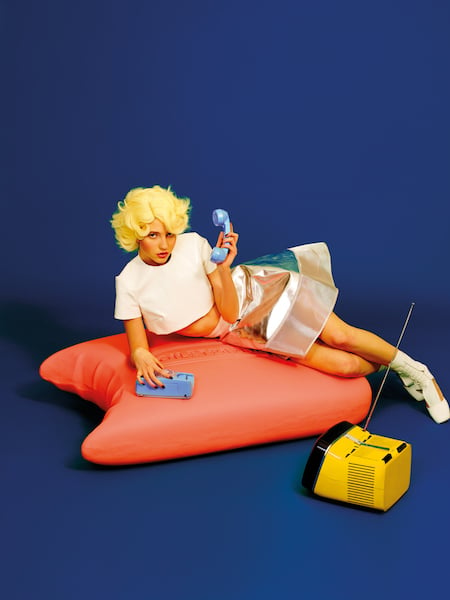
Soap by TOILETPAPER (Maurizio Cattelan & Pierpaolo Ferrari).
Photo: Courtesy Gufram.
Throughout recent history, art and design have had a sort of love-hate relationship. How would you define this relationship today? Do you think art and design should still be considered different disciplines, or are they conflating into one continuum?
I’m not very fond of categories and disciplines, I believe these two words are terribly dangerous: They seem to be as definitive as tombstones. What interests me is the overlapping of different areas, such as art and design, or art and fashion. It has been demonstrated that solutions to difficult problems may come by people not directly involved in a specific field. I wonder if the contemporary art world will be renovated thanks to people from design, and vice versa.
Italy has a huge artistic tradition, but also a superb industrial design history. How important are the radical designers/artists of the 1960s, 70s, and 80s for you, such as Ettore Sottsass, Alessandro Mendini, or even Bruno Munari?
Radical design is a muse of ours. For the book 1968 we shot Dakis Joannou’s collection of furniture. It was like being in a vast playground filled with expansive and delicate toys. Something magical was going on there: A world of inanimate objects started to flow and hybridize, encouraged by the TOILETPAPER spirit. We felt like the photos and the book gave them the chance to live in the world they’ve helped to build.

Rugs from the collection Seletti Wears TOILETPAPER (Maurizio Cattelan & Pierpaolo Ferrari).
Photo: Studio Badini.
You “retired” from being an artist in 2011 (even if you remain busy with many other ventures). Do you ever miss making art?
I feel I never started being an artist, and maybe that’s the reason why it was so easy to decide to retire! The fact is that art for me is not about gaining something, it’s more about getting rid of the darkness I accumulated. During these last four year I’ve gathered a lot of junk … I feel like now it’s time to get rid of some of it again.
Why did you retire? Was it a sort of Duchampian retirement, meaning, it was more of a confrontational statement than a “real” retirement, or have you really had enough of the art world?
I was needing to put higher obstacles in my way and see if I would manage to jump over them. Believe me if I say that retirement was definitely one of the greatest challenge I had to face in my life.
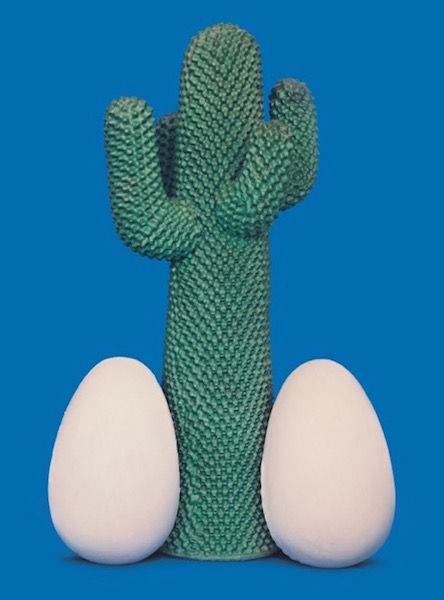
God by TOILETPAPER (Maurizio Cattelan & Pierpaolo Ferrari).
Photo: Courtesy Gufram.
TOILETPAPER started as a magazine and publishing house and has evolved into a branding platform, encompassing design, clothes, and even an online shop. I wonder if you thought that this straightforward commercialization of your ideas/products was perhaps more “honest”, accessible, and democratic than the more opaque dealings of art pieces within the art world?
I’ve never deeply investigated the reasons that move me in doing something: Every time it simply seemed to be the right thing to be done in that moment. I leave to others the judgements regarding these matters: I go on, without listening to the commentaries, and I’m confident that the next chapter is suggested between the lines of what is already written.
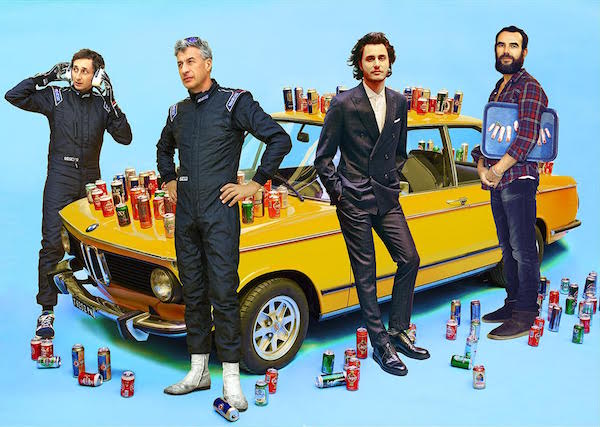
Left to right: Pierpaolo Ferrari, Maurizio Cattelan, Charley Vezza (Gufram), and Stefano Seletti (Seletti).
Photo: Courtesy TOILETPAPER.
What can you tell me about your collaboration with Gufram and Seletti? How did the collaborations with these important brands come about and how did you design and choose the specific motifs and items your created?
Both Pierpaolo and I are fascinated by the overlapping between different areas, we think they’re very productive, so when Charley and Stefano asked us to ideate some special products with them we were enthusiastic. Working with design gave us a great possibility to circulate our images in a new way and test their strength once more. They were great in continuously exchanging ideas about the products’ design. It was not so easy to find people that like TOILETPAPER images to the point of using them so widely and freely.
From the very beginning, your work has always featured two very visible aspects: a preoccupation with death and the use of humour as a (coping?) strategy, be it slapstick, surreal, or black humor. As the years go by, do you feel that your attitudes to life, death, and humor might be changing in any way?
The driver of my school bus used to say to us, “A man is a success if he gets up in the morning and gets to bed at night, and in between he does what he wants to do.” My updated version nowadays is if you wake up and you’re not in pain, you know you’re dead.
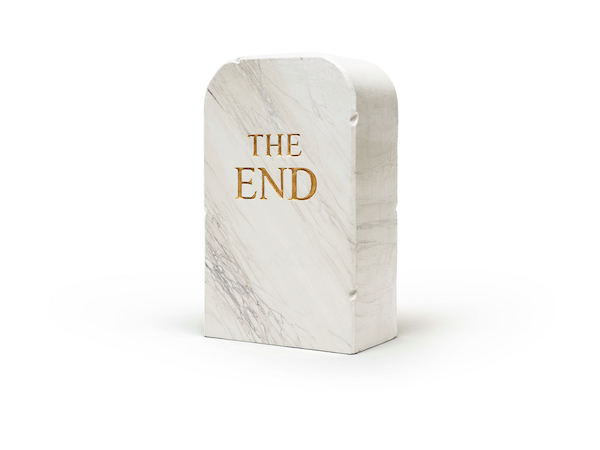
The End 1516 by TOILETPAPER (Maurizio Cattelan & Pierpaolo Ferrari).
Photo: Alberto Zanetti Courtesy Gufram.